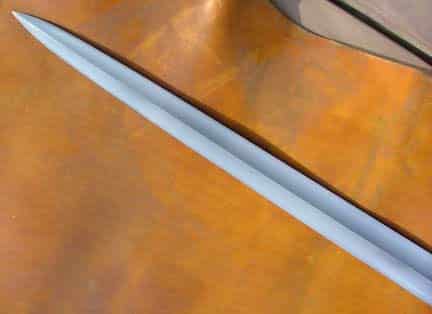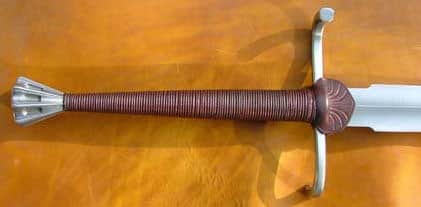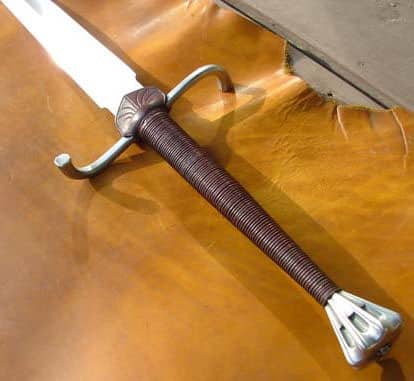The Svante sword, a late medieval Swedish longsword, is one of Albions Museum Line Collection Swords – These are recreations of specific, fine historical swords in the worlds museums. These recreations are founded on Albions sword expert Peter Johnssons hands-on research and analyzation of the originals
Albion now offers a faithful recreation of an historical sword named after its owner, Swedish Viceroy and knight, Svante Nilsson Sture. During the years of the union between Denmark, Sweden and Norway, many battles were waged and towns and strongholds burned. The seat of power wavered between the Danish court and strong noble families in Sweden who preferred a Swedish regent on the throne in opposition to the union. Svante Nilsson Sture became a major player in this struggle and fought on both sides of the conflict, sometimes supporting sometimes opposing the Danish claim of the Swedish throne.
Being a member of the high council from 1482 he was finally elected Regent of Sweden at the death of his old adversary, the powerful and dynamic Sten Sture the Elder in the year 1504. Svante Nilsson Sture is enigmatic and fascinating: shrewd politician, bold warrior and struggling diplomat. From him we have a legacy of one of the finest late medieval fighting swords in existence in Sweden today. The original sword rests in the museum of Vter Cathedral, where Svante Nilsson Sture was buried in January, 1512.
When Svante Sture’s grave was opened in 1958, during a restoration of the cathedral, this sword was discovered with his body. It is one among the few swords that have been found in Swedish medieval graves, let alone that of a prominent historical person. It is also an important find from an international perspective, in particular because of the unusual shape of its blade.
Even though the sword is now in part badly corroded, it is clearly a high-quality weapon of war. The grip is long, giving ample space for both hands. However, with a point of balance some 2 1/8 from the cross, it handles well with one hand only. Though the Svante sword looks almost delicate in photographs, it is actually a very large and imposing sword, carrying a lot of authority — a true warrior’s sword of the period, made for fighting, not display. The sword has an unusually powerful blade, and yet is surprisingly maneuverable and quick for its size. Related swords are most frequently depicted in art from the 1490s to the mid-1520s.
Peter Johnsson thoroughly documented the original sword, making it the subject of his degree thesis. This research is the foundation for this accurate reconstruction of the Svante sword. The blade is hand ground from high carbon steel and polished to a satin finish. The blade is heat treated for flexibility and edge retention. The crossguard and pommel are cast steel. The wood grip is bound with cord for strength and tightly wrapped with leather. A leather chappe is at the crossguard to protect the blade from rain whilst in a scabbard.













Reviews
There are no reviews yet.